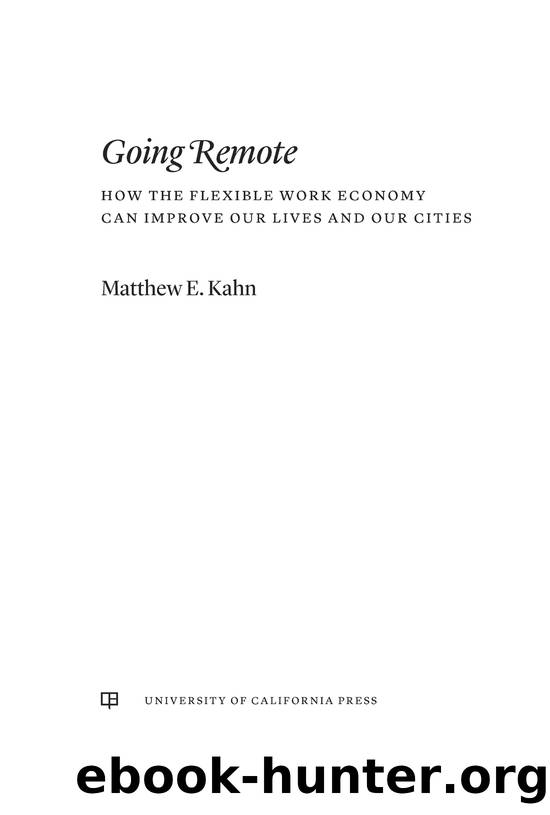Going Remote by Matthew E. Kahn

Author:Matthew E. Kahn
Language: eng
Format: epub
ISBN: 9780520384316
Publisher: University of California Press
Commercial Buildings Conversion into New Housing
In many major US cities, there are iconic commercial office buildings such as 30 Rockefeller Center in New York City, the Transamerica Pyramid Building in San Francisco, the Prudential Center in Boston, and the John Hancock Tower in Chicago. What will become of these properties? Can they be converted into residential housing?
Commercial property owners may choose to incur costs to convert their property into residential real estate. If commercial real estate rents are high because a given building is located in a productive part of the city close to other commercial towers, then the conversion of those buildings into residential real estate can lower the value of other commercial rents because they lose access to productive partners. Individual owners of commercial properties, who tend to focus on their own profits, have little incentive to recognize whether their actions convey benefits or harms to nearby building owners.
If high-cost cities experience a sharp decline in commercial rents, some owners may be reluctant to sell at a much lower price. Real estate research based on data from Boston condos in the 1990s found that owners do not sell for a price below what they originally paid for the asset.47 In a bust, however, homes tend to sit on the market for long periods of time with asking prices well above expected selling prices, and many sellers eventually withdraw their properties without sale. Behavioral economists have advanced an explanation called âprospect theory,â which argues that asset owners keep in mind the assetâs purchase price and this price anchors their current decisions as they do not want to sell an asset for a loss. If the value of commercial buildings in superstar cities declines and if the asset owners engage in such behavioral logic, then they will be slow to sell their buildings to residential housing developers. Such individual behavior can have macroeconomic consequences for the city as the conversion of buildings from outdated commercial uses to demanded residential uses would be slowed due to price negotiations.
Regulations such as zoning laws can also slow down the transition. A misallocation of space will occur if there are vacant commercial properties adjacent to residential buildings with high rents and the commercial property cannot be rezoned for residential property. In Manhattanâs recent past, industrial space existed because Manhattan was a center of manufacturing in the 1950s. As these firms closed, this space was illegally used as residential space. If the land use code were more flexible, this transition of using buildings for their highest and best value would occur more quickly.
Download
This site does not store any files on its server. We only index and link to content provided by other sites. Please contact the content providers to delete copyright contents if any and email us, we'll remove relevant links or contents immediately.
International Integration of the Brazilian Economy by Elias C. Grivoyannis(99397)
The Radium Girls by Kate Moore(11978)
Turbulence by E. J. Noyes(7983)
Nudge - Improving Decisions about Health, Wealth, and Happiness by Thaler Sunstein(7662)
The Black Swan by Nassim Nicholas Taleb(7064)
Rich Dad Poor Dad by Robert T. Kiyosaki(6517)
Pioneering Portfolio Management by David F. Swensen(6261)
Man-made Catastrophes and Risk Information Concealment by Dmitry Chernov & Didier Sornette(5958)
Zero to One by Peter Thiel(5736)
Secrecy World by Jake Bernstein(4703)
Millionaire: The Philanderer, Gambler, and Duelist Who Invented Modern Finance by Janet Gleeson(4425)
The Age of Surveillance Capitalism by Shoshana Zuboff(4252)
Skin in the Game by Nassim Nicholas Taleb(4206)
Bullshit Jobs by David Graeber(4143)
The Money Culture by Michael Lewis(4139)
Skin in the Game: Hidden Asymmetries in Daily Life by Nassim Nicholas Taleb(3962)
The Dhandho Investor by Mohnish Pabrai(3729)
The Wisdom of Finance by Mihir Desai(3698)
Blockchain Basics by Daniel Drescher(3544)
